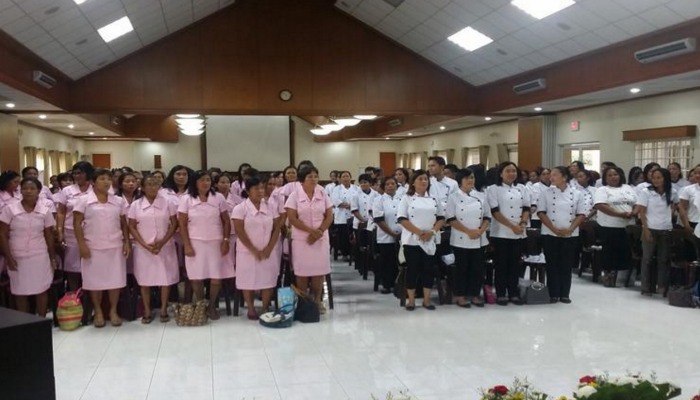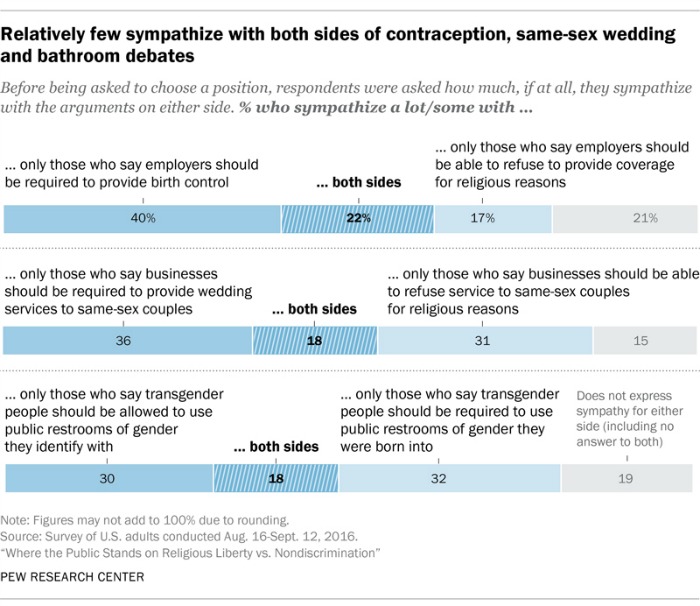When Not to Baptize Your Child; Stanford Makes Waves in LDS Football Scene; and More!
LDS Effort to Lift Poor Expanded

Since its conception by President Gordon B. Hinckley in 2001, the Perpetual Education Fund has assisted 83,260 members of The Church of Jesus Christ of Latter-day Saints pursue higher education, with a 90% employment rate among graduates. But the need for an even bigger fund, with even farther reaching effects was soon realized.
The Perpetual Emigration Fund helped 30,000 Mormon Pioneers make the trek to Zion over the course of 38 years. The Perpetual Education Fund has provided over 5,000 new loans every year for the past 15 years.
In 2012, President Thomas S. Monson authorized the expansion of the Perpetual Education Fund. The resulting program is 20-times larger than the Perpetual Education Fund, and has helped well over 100,000 people receive an education, training, start or grow a business, and obtain employment.
The program, titled Self-Reliance Services, has shown remarkable results. When implemented in African countries, Mormons putting aside money for savings rose 106 percent after they graduated from self-reliance training. Those who were debt free rose to 38 percent.
So far, Self-Reliance Services has only touched upon international congregations, but pilot-programs are cropping up in the U.S. and Canada. All self-reliance materials are available on churchofjesuschrist.org as well as the LDS Gospel Library App.
Read more at Deseret News.
When Not to Baptize Your Child
 The decision to be baptized is a rite of passage for every member of the LDS Church. Those raised in the Church may look back at their baptism at 8-years of age with fond memories of the spirit. For LDS parents, allowing your child to be baptized is a no-brainer — but what happens when your child can’t make the decision for himself.
The decision to be baptized is a rite of passage for every member of the LDS Church. Those raised in the Church may look back at their baptism at 8-years of age with fond memories of the spirit. For LDS parents, allowing your child to be baptized is a no-brainer — but what happens when your child can’t make the decision for himself.
Latter-day Saint Sarah Sargent came face-to-face with this when her autistic son, Cohen, reached the age of eight. After much prayer and meditation, it was determined that since Cohen couldn’t rightly make the choice for himself and understand the meaning of the covenants made, he wouldn’t be baptized.
However, this didn’t stop the Sargent family from having a “Non Baptism Day,” devotional and all.
Read the rest of the story at The Liahona Project.
Stanford Officially Mormon Magnet

In the past, Brigham Young University and University of Utah had a monopoly on LDS high school football stars. But recently, Stanford has stolen the spotlight from these Mormon-dense universities. This comes as surprise, considering this is the same university that refused to play scheduled games against BYU in 1970. Yet, this year, the Cardinal boasts three returned missionaries on its roster, with another four set to join the team come 2018.
This increase in Mormon players is likely due to Stanford’s acquisition of defensive coordinator Lance Anderson — who just happens to be a returned missionary himself. When the biggest drawback of signing an LDS player is the two year waiting period while they serve an LDS mission, it helps to have a sympathetic ear.
Dallas Lloyd, who played safety for the Cardinals since returning from his mission in 2012, is glad to have set the bar high in proving the benefits of signing LDS recruits.
“I take pride in the fact that our coaches have seen how I turned out, and so they realized, ‘Hey you know, it’s not a bad idea to recruit these kids,’” Lloyd said. “They’re not gonna decommit from us while they’re on their mission and go elsewhere. They’re gonna stay loyal to their word, and they’re bigger, they’re older, they’re more mature.”
Read more at the San Francisco Chronicle.
Consensus on Contraceptives; Gay and Transgender Issues… Not So Much

A recent study published by Pew Research Center titled “Where the Public Stands on Religious Liberty vs. Nondiscrimination” surveyed the general American public on a few hot-button issues: health care covered contraceptives, transgender bathroom policies, and wedding services for same-sex couples.
The study found that though the majority of the population is on board for employers to cover contraceptives in their healthcare plans, there is a sharp divide on the other two topics.
“What doesn’t surprise me — but is I think the biggest news in terms of the value of the research — is the deep divide in this country is more basically theological than anything else,” said Rev. Albert Mohler, president of the Southern Baptist Theological Seminary.
Participants who were active church-goers were also more likely to express traditional moral views within the study. Specifically that transgendered individuals should use the bathroom of their birth gender, and businesses should be able to refuse to provide services to same-sex couples for religious reasons.
Rev. Kelly Brown Douglas of Washington National Cathedral felt the study revealed the discriminatory climate of the United States, and the methods by which it is rationalized.
“We’ve often seen throughout our history that people have used religion to try to legitimize discrimination of other human beings,” Douglas said.
Within the LDS community there has been a recent emphasis on standing up for religious liberty, lest we lose it entirely. While there is no doubt this is a great cause to be championed, the study raises the question: Where do we draw the line between exercising religious freedom, and discriminating against a group of people who don’t share our beliefs?
Read more at Religion News Services.


